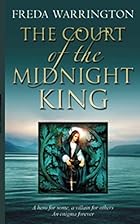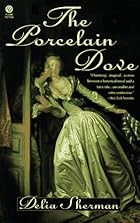Sarah Ash read music at New Hall, Cambridge for four years, studying with Robin Holloway and John Rutter for her finals. Her interests in music and drama led her into teaching where she has been lucky to work with many dynamic and talented young people.
Although she had co-written several musicals for young performers, she decided in 1991 to concentrate her creative energies on her other passion: writing. Having been shortlisted in the final ten of the Guardian Children’s Fiction award for a – still unpublished – fantasy The Mabinogion Mice, her breakthrough came in 1992 with the publication in Interzone of the short story ‘Moth Music’. You can find Sarah on the web here: http://www.sarah-ash.com/
Sarah has popped into the Bristol Book Blog to talk about Historical Fantasy.
Historical Fantasy...or Alternate History?
Sarah Ash
Is
Historical Fantasy a cop-out for fantasy writers (no secondary world-building
required, it’s all there in the history books already) ? Or is it a unique way
to explore a historical period or a significant figure in ways that authors
like Hilary Mantel or Bernard Cornwell can’t exploit as they have to ‘stick to
the facts’? (Although, it’s often been argued that all fiction set in the past is
fantasy to some extent as the genre involves an author imagining themselves
inside the heads of ‘real’ people.)

I’ve
always loved reading historical fiction and still count Rosemary Sutcliff and
Mary Renault among my favourite writers. Their feats of historical imagination
in works like Sword at Sunset (Sutcliff)
and The King Must Die and The Bull from the Sea (Renault) inhabit
that misty middle ground between legend and historical fact; Sutcliff explores
the life of a Romano-British Arthur and Renault tackles the story of Theseus
and the Minotaur, basing it at Knossos on Crete. In the mid-twentieth century
when those novels were first published, gritty realism was ‘in’, novels by
Angry Young Men stole the literary headlines and plaudits and writing fantasy for
adults was largely frowned on as being both irrelevant and escapist. So there
was no magic in these historical novels as such, rather the presentation of a
possible origin story around which legends soon arose. How fashions have
changed in half a century!
I learned
– the hard way – that writing kosher historical fiction – the kind where you
imagine what happened in the gaps between the factual information (letters,
documents, etc.) – can go horribly wrong when ‘new’ information is unearthed after you finish the novel. Nowadays the
internet offers such a wealth of information at the fingertips that those
faraway days of trekking from library to library seem like a memory from the
Dark Ages. It took so long to ferret out obscure facts and track down
documents...

The first historical novel I wrote was based on real people
but I could find very little in the way of concrete facts on which to hang the
story. In those pre-internet days I had to go to the British Library to do
research and I spent wonderful times in the old domed Reading Room toiling
through obscure and ancient volumes in French. But, even though my French
improved, I gleaned very little in the way of new material, so I set to and
wrote the novel anyway, making up all the missing bits (as you do).
While
the novel was ‘doing the rounds’, we happened to be in Brittany on a wet
holiday and left the camp-site to go into town to find distractions for our two
bored little boy. What should I find, but a brand-new book on my chosen subject
with archive material that had recently come to light. And, you guessed it, the
bits I had made up were way off the mark. Charlotte-Anne de Chanlecy, my
heroine, had never been in Paris in her teenage years, her first husband had
not been an old lecher at all but a dashing war hero who had died of his wounds
etc. etc. No quick rewrites were ever going to fix those problems! So I mourned
my historical novel and put it aside, consoling myself with the fact that maybe
one day I could return to it, maybe describing it as alternate history…

My
inspiration, Alexandre Dumas, was far from accurate in his historical novels.
‘The Three Musketeers’ takes place between 1625 and 1628, culminating in the
Siege of La Rochelle. Dumas artfully explains that he has verified the facts in
the novel by discovering the obscure ‘Memoirs of the Comte de la Fère’ (sending
countless readers to the Bibliothèque Royale on a fruitless search). In
reality, he had used the fictional ‘Memoirs of d’Artagnan’ written by an
ex-soldier who may or may not have met the man himself. These pseudo-memoirs
are much more accurate in their dates, starting around 1640 at the end of Louis
XIII’s reign, when – it is conjectured by some scholars – the real Charles
d’Artagnan may have begun his military career. So the ‘real’ d’Artagnan could
not have been at the Siege of La Rochelle; he was still a boy in Gascony.
Nowadays,
we demand a far greater degree of factual correctness in our historical novels
and were Dumas writing today, his novels might well be described as Alternate
Histories. And if he’d given the musketeers winged horses and the beautiful
villainess Milady had been a vampire (Dumas’s descriptions come close!) the
novels would have become Historical Fantasies… (see Pierre Pevel below).

However,
I don’t want to give the impression that creating historical fantasy is just an
excuse for dressing up in cod-period clothes and re-creating on the page some
scenes you saw in some old movie or TV series – there’s no place for lazy
writing here! On the other hand, the best historical fiction wears its research
lightly, so there’s no need to regurgitate all your notes; if readers want
facts, they’ll go to the non-fiction shelf. So, let’s say that your story’s set
in fifteenth century Wales during the Wars of the Roses (what might have
happened if Henry Tudor had drowned on his return voyage to challenge Richard
III?). And talking of Richard III, the recent DNA revelations (blue eyes, fair
hair) when we’re most used to imagining him with dark hair and eyes (Lawrence
Olivier film version?) illustrate what a
minefield the whole issue of historical accuracy can be.
My
solution? To set my fiction in an invented world which, although similar to our
own in some ways, is utterly different in every other respect. Even though ‘The
Tears of Artamon’ series is set in a nascent age of reason, the scientific
advances are described as alchymy, and intruders from heaven and hell, in the
form of Winged Guardians and Drakhaouls, still wage their eternal war in the
world of mortals. But no sooner had I begun to write ‘Artamon’ than I realized
that, in creating my own history, I would have to establish my own timeline and
stick to it rigidly. I had to establish firm dates to ensure that momentous
events, like the destruction of the Francian fleet by Prince Karl the
Navigator, took place at a fixed point in time (eighteen years before Gavril
Nagarian becomes Drakhaon of Azhkendir, to be precise). I was kidding myself
when I thought I could escape the rigour of working within historical facts!

So by all
means, immerse yourself in contemporary memoirs, diaries, documents, maps –
it’s your passion for that historical period that’s started the whole project,
after all – have your fun, but then internalize it all and only bring out those
fascinating nuggets of research when they’re genuinely relevant to the story
you want to tell.
A few
personal recommendations from this very wide-ranging genre:
The Cardinal’s Blades trilogy
by Pierre Pevel (translated by Tom Clegg) Gollancz
Pevel presents us with a seventeenth century France
in which magic and dragons exist. This is a truly swashbuckling story which
wittily evokes the fast-moving dialogue of Alexandre Dumas whilst depicting the
‘other’ side, Cardinal Richelieu’s blades. (Look out for cameo roles of Dumas’s
Musketeers!)

The Court of the Midnight King: a Dream of
Richard III by Freda Warrington, now
available as an e-book, is a very ‘different’ and imaginative take on the life
and times of Richard III by a gifted author whose writing is steeped in
folklore and legend.

The Porcelain Dove by Delia
Sherman takes us to France again, this time in the eighteenth century, and to a
village far from bustling Paris where local superstitions and customs affect a
well-born family and their servants in unexpected ways. Delia Sherman evokes
the period with exquisite attention to the little details of everyday living
that bring her characters vividly to life.

Jo Walton
writing at Tor.com in 2009 offers her own fascinating perspective on the
topic:
Part of
this article originally appeared in Spectre Pulse in 2008
***
Many thanks to Sarah for this fascinating look at Historical Fiction. Please do go and check her books out!

No comments:
Post a Comment